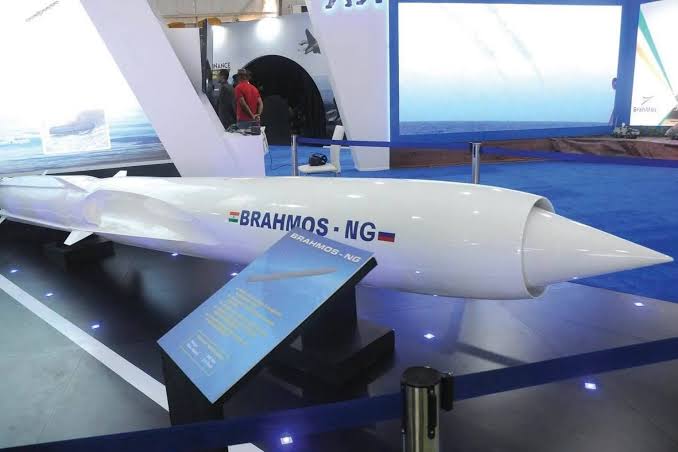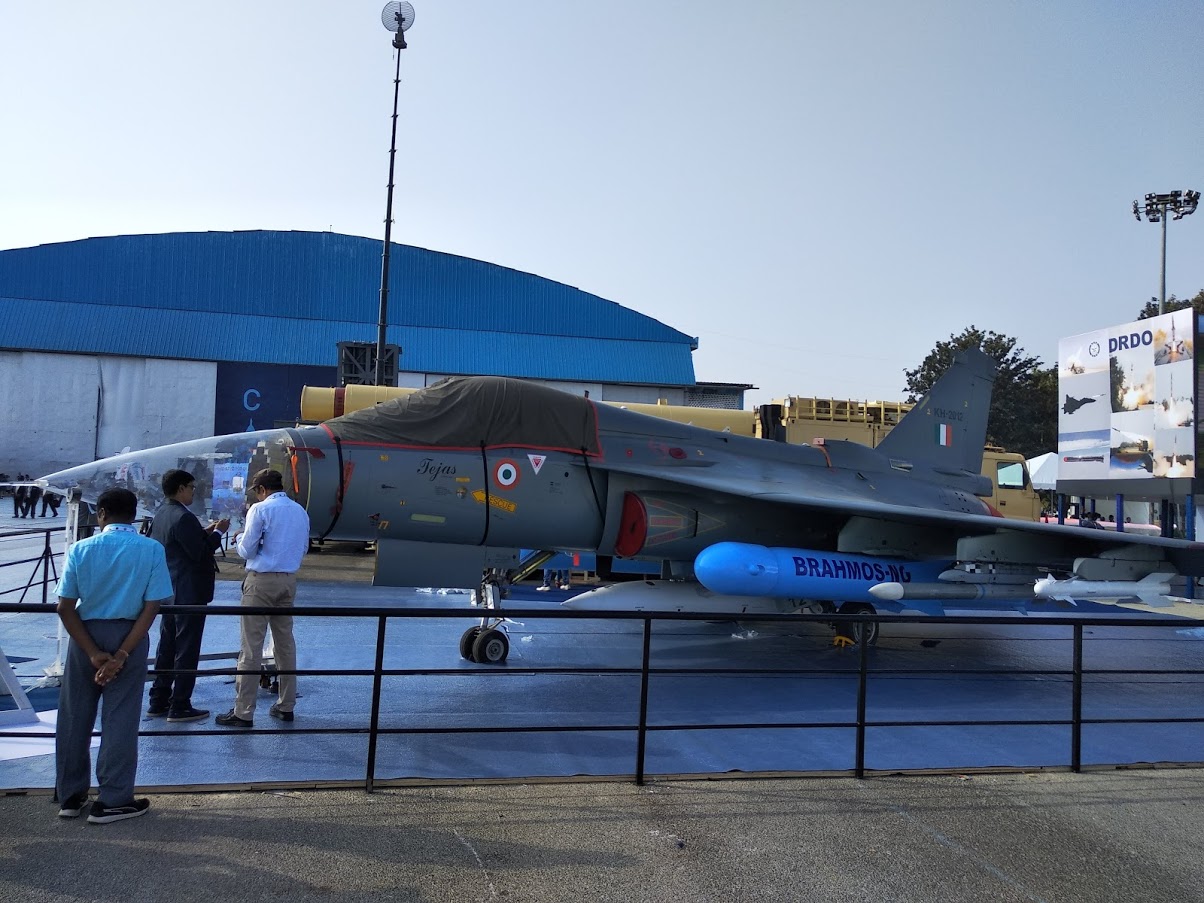In a development that could greatly enhance the capabilities of the Indian Air Force (IAF), the Indo-Russian joint venture BrahMos has revealed plans to begin testing its new air-launched supersonic missile, “BrahMos-MA,” within two years.
BrahMos is a supersonic cruise missile developed by the Russian-Indian joint company BrahMos Aerospace. The weapon’s collaborative producers are the Russian NPO Mashinostroeniya and the Indian government’s Defence Research and Development Organisation (DRDO). The Indian Air Force, Navy, and Ground Forces use it.
The latest announcement about the BrahMos-MA was made by Alexander Maksichev, co-director of BrahMos JV from the Russian side, during the International Military-Technical Forum (IMF) “Army-2024”, Russia’s TASS News Agency reported.
The report further noted that the BrahMos-MA was previously known as the BrahMos-NG, thus clarifying that it is the same missile that has remained under development for several years now. The co-director of the joint venture announced that the missile is presently in development, with the precise design documents being prepared.
“Now we are working with the air-launched version of the missile. We are at the stage of developing working design documentation. If everything goes well, we will start testing the missile in two years,” Maksichev was quoted as saying (the statement has been machine-translated from Russian to English).
The Russian-Indian joint venture plans to begin testing the latest air-launched supersonic missile BrahMos-MA (BrahMos-NG) in two years.
A. Maksichev, co-director of the BrahMos joint venture on the Russian side, reported this to TASS on Monday.
Details:https://t.co/cgO3VE2wYX https://t.co/H91yyw1U2p pic.twitter.com/ReCR8gwiF6— Massimo Frantarelli (@MrFrantarelli) August 14, 2024
Though the statement inspires confidence, it is believed that the testing will not start until the summer of 2026. This starkly contrasts the Indian expectation that the state trials would begin by 2025.
At the World Defense Show in February this year, BrahMos Export Director Pravin Pathak said, “First flight samples of the new BrahMos-NG rocket will be collected for flight tests in tandem with the plant’s development, with a target launch date of late 2025 or early 2026.”
Once Leading Pakistan’s JF-17, Why India’s LCA Tejas Slowed Down While Thunders Zoomed Ahead?
“It is planned to collect them and start flight tests before the end of 2025,” he added.
However, Pathak mentioned that there were no prerequisites for non-compliance with the stated deadlines. The Indian side has yet to respond to the Russian side’s new announcement, and the BrahMos JV has not provided an explanation regarding the missile program, which appears to have been delayed.

The Indian Air Force (IAF) chief, Air Chief Marshal Vivek Ram Chaudhari, emphasized in a previous media interaction that, “As one of our most lethal air-combat assets, the BrahMos supersonic missile has galvanized how we will equip ourselves with precision firepower in the coming years. Seeing the conflicts happening across the globe, the importance of precision and long-range firepower can’t be underscored.”
The missile’s testing and development are significant for India, which remains marred by a protracted border conflict with China and Pakistan. In addition to using the BrahMos and an upgraded version of the original missile (BrahMos-Extended Range), India has invested in building a more compact and stealthier version of the missile in the wake of a burgeoning security threat, especially from China’s People’s Liberation Army (PLA).
The BrahMos-MA/NG: Delayed But Promising
The BrahMos-NG (Next Generation) or the BrahMos-MA will be a scaled-down variant of the existing BrahMos missile. The new missile is anticipated to maintain a range of 290 kilometers and achieve a supersonic speed of Mach 3.5.
However, it will be at least three meters shorter and 50 percent lighter than the current version of the BrahMos. The BrahMos missile, currently fired from the air, weighs about 2,400-2,500 kilograms, whereas the weight of the new compact missile will drop to about 1,206 kilograms.
BrahMos CEO Atul Dinkar Rane announced last year that the new missile would be mounted on the indigenously developed LCA Tejas aircraft of the IAF. Thus, the new missile would significantly enhance the aircraft’s combat capability, as it would be able to carry both short-range thermal missiles and long-range, beyond-visual-range missiles.
Forget J-20, China’s H-20 Stealth Bomber Threatens ‘Easy Penetration’ Of LAC; How Can IAF Respond?
As per previous plans, the missiles are set to be initially installed on Russian-manufactured aircraft during the development stage and later deployed on Light Combat Aircraft manufactured in India. The LCA will only have two of these next-generation missiles, while the Su-30 MKIs can carry four. The potential weapon integration aboard the LCA Tejas has been hailed as a game-changer by military analysts.
“The imperative for reducing the weight of the BrahMos NG to around 1,200 kilograms from the 3,000 kilograms of the BrahMos and the 2,500 kg of the BrahMos-A was to enable even a light fighter like the Tejas LCA Mk-1A to carry the missile,” explained Squadron Leader Vijainder K. Thakur.

The missile’s reduced weight and dimensions will allow it to be transported by a greater range of platforms, including fighter planes and traditional submarines. It can be fired under the surface from above, below, and on the ground. Because of its size, this missile may be fired even from undersea torpedo tubes.
The Indian Air Force and Indian Navy’s MiG-29 fighters will also likely be equipped with this new BrahMos missile. Additionally, if the news reports are correct, they could potentially be provided to the Russian Aerospace Forces, which continues to be involved in the Ukraine War and has been swiftly exhausting its own missile stockpiles.
The BrahMos missile, which is presently in use by all three Indian military wings can fly supersonic without interruption. This feature reduces target dispersion, shortens engagement periods, and ensures that no weapon system can intercept it.
The diminished radar cross-section (RCS) and enhanced stealth of the new and compact BrahMos next-generation missile will complicate detection and engagement by air defense systems.
- Contact the author at sakshi.tiwari9555 (at) gmail.com
- Follow EurAsian Times on Google News




